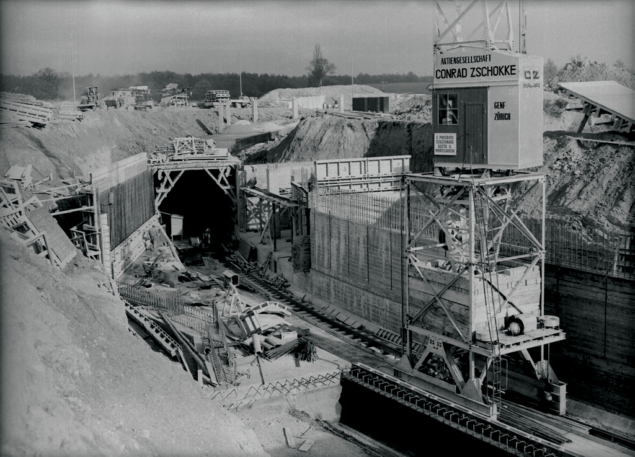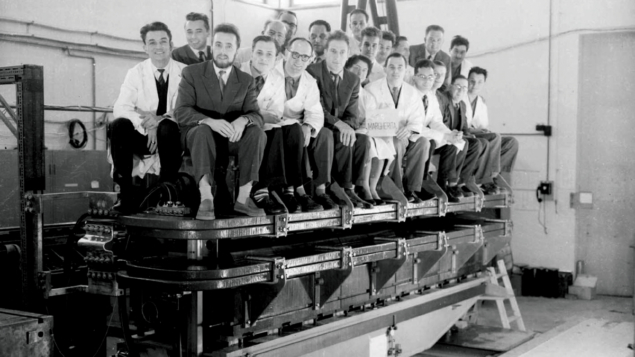
On 24 November 1959, CERN’s Proton Synchrotron (PS) first accelerated beams to an energy of 24 GeV. 60 years later, it is still at the heart of CERN’s accelerator complex, delivering beams to the fixed-target physics programme and the LHC with intensities exceeding the initial specifications by orders of magnitude. To celebrate the anniversary a colloquium was held at CERN on 25 November 2019, with PS alumni presenting important phases in the life of the accelerator.
The PS and its sister machine, Brookhaven’s Alternating Gradient Synchrotron, are the world’s oldest accelerators
The PS is CERN’s oldest operating accelerator, and, together with its sister machine, the Alternating Gradient Synchrotron (AGS) at Brookhaven National Laboratory in the US, one of the two oldest still operating accelerators in the world. Both designs are based on the innovative concept of the alternating gradient, or strong-focusing, principle developed by Ernest Courant, Milton Stanley Livingston, Hartland Snyder and John Blewett. This technique allowed a significant reduction in the size of the vacuum chambers and magnets, and unprecedented beam energies. In 1952 the CERN Council endorsed a study for a synchrotron based on the alternating-gradient principle, and construction of a machine with a design-energy range from 20 to 30 GeV was approved in October 1953. Its design, manufacture and construction took place from 1954 to 1959. Protons made first turns on 16 September 1959, and on 24 November beam was accelerated beyond transition and to an energy of 24 GeV. On 8 December the design energy of 28.3 GeV was reached and the design intensity exceeded, at 3 × 1010 protons per pulse.

The PS has proven to be a flexible design, with huge built-in potential. Though the first experiments were performed with internal targets, extractions to external targets were soon added to the design, and further innovative extraction schemes were added through the years. On the accelerator side, the intensity was progressively ramped up, with the commissioning of the PS Booster in 1972, the repeated increase of the injection energy, and many improvements in the PS itself. Through the years more and more users requested beam from the PS, for example the EAST area, antiproton physics, and a neutron time-of-flight facility.
With the commissioning of the ISR, SPS, LEP and LHC machines, the PS took on a new role as an injector of protons, antiprotons, leptons and ions, while continuing its own physics programme. A new challenge was the delivery of beams for the LHC: these beams need to be transversely very dense (“bright”), and have a longitudinal structure that is generated using the different radio-frequency systems of the PS, with the PS thereby contributing its fair share to the success of the LHC. And there are more challenges ahead. The LHC’s high-luminosity upgrade programme demands beam parameters out of reach for today’s injector complex, motivating the ambitious LHC Injectors Upgrade Project. Installations are now in full swing, and Run 3 will take CERN’s PS into a new parameter regime and into another interesting chapter in its life.





